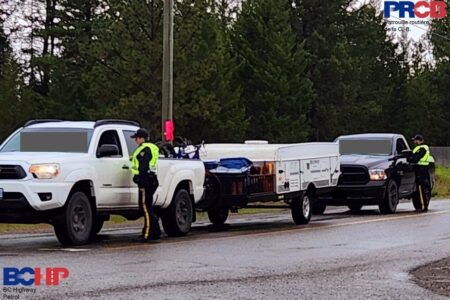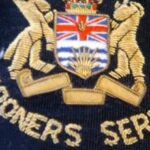PART TWO: What does 'crime reduction' look like in Castlegar and Trail?
Last week, we discussed the overarching goals of a specialized RCMP Crime Reduction Unit in Castlegar, as presented to city council by CRU non-commissioned officer in charge Cpl. Darryl Orr and his supervisor, Sgt. Mike Wicentowich (To read Part One, click here). Those goals/priorities include in-depth or long-term investigations, repeat-offender management, crime hotspots (ie: a rash of break-and-enters) and proactive policing.
But what does that translate to in the West Kootenay – what does it look like?
Orr oversees the CRUs both in Trail, which has three CRU officers, and in Castlegar, where Orr and Const. Brendan Vaillant comprise the unit. Orr said it makes sense for one person to oversee both, as there’s a great deal of overlap in criminal activity between the two neighbouring cities.
He said drugs are a priority for both units, explaining that the top two concerns in the area are marijuana and cocaine, along with abused prescription drugs.
“Crystal meth isn’t taking over our top two street-level drugs, and I don’t see that happening anytime soon, which is good,” he said, explaining that meth has created dramatic problems in other communities, problems that have, thus far, not plagued Trail or Castlegar.
He also said the legalization of marijuana in several U.S. states doesn’t appear to have impacted the drug trade here in our region.
Orr said the city’s almost-quarter-million-dollar investment in its CRU also means RCMP have the resources to conduct long-term, in-depth investigations, such as the recent armed robbery in Castlegar and the arson of a local church – even homicides are well within the capacity of a CRU.
Their work isn’t all about intense man-hunts and whodunits, though – some of it’s very pedestrian, but ultimately critical, endeavour.
Looking at the big picture, Orr said a huge element of the mandate within specialized units like these is relationship building.
“It’s based on human intelligence,” he said. “We’re never going to solve crimes unless we get out, interacting with and talking to those humans.”
He said they have a variety of vehicles by which to do just that – including vehicular stops in which they check for drugs, alcohol, etc., with drug seizures often leading to larger investigations – but also during which they have the chance to talk to people and engage with the community.
“One of our main focusses is offender management,” he added. “We regularly check in with people who are under house arrest, probation, parole or have curfew conditions.
“One of the goals in conducting the checks is not only enforcement, it’s also to develop a relationship with these offenders and find out what they’re doing and who they’re hanging out with.
“We’re seeing about 10 per cent of people committing about 90 per cent of the crime, most of them repeat offenders. If we know what they’re doing, and they’re continuing to commit crimes, we can keep putting them back in jail again and again, which reduces the crime levels dramatically.”
And while some offenders essentially seem to be locked into a revolving door of crime-and-punishment, Orr said some actually work to make new decision, develop new skills and turn their lives around – and his members want to be there for that, as well.
“We want to encourage them in turning things around,” he said. “We want to see them get back on track, developing some pride and life skills.”
He said that kind of proactive policing prevents more crime than most people would realize – one prolific offender can commit more than 30 break-and-enters in a single weekend, if no one’s there to stop them.
“I hate to think what would happen if we didn’t have the resources to keep an eye on these offenders,” he said.
When it comes down to brass tacks, both Orr and Wicentowich said they’re confident that both CRUs, in Trail and Castlegar, are having a significant impact on crime levels in the region – which, ironically, may make crime statistics go up, rather than down.
“An increase in (recorded) crime rates may not mean an increase in crime – it can reflect an increase in enforcement. For example, you can have 20 people charged with impaired driving one month, then have cops aggressively enforcing the next month and see 60 arrests. It’s not because more people are drinking and driving.”
City councillor and chair of the city’s Public Safety Committee Florio Vassilakakis said the investment in the city’s CRU is money well spent.
“It’s like buying advertising – you can’t really quantify the return, but it still has value,” he said. “I’m a believer in spending the money on prevention, rather than having to deal with the aftermath of crime. In general, I think people will agree that when you don’t hear that crime is happening, you feel safer than if you have a larger police force dealing with crimes after the fact.”






















